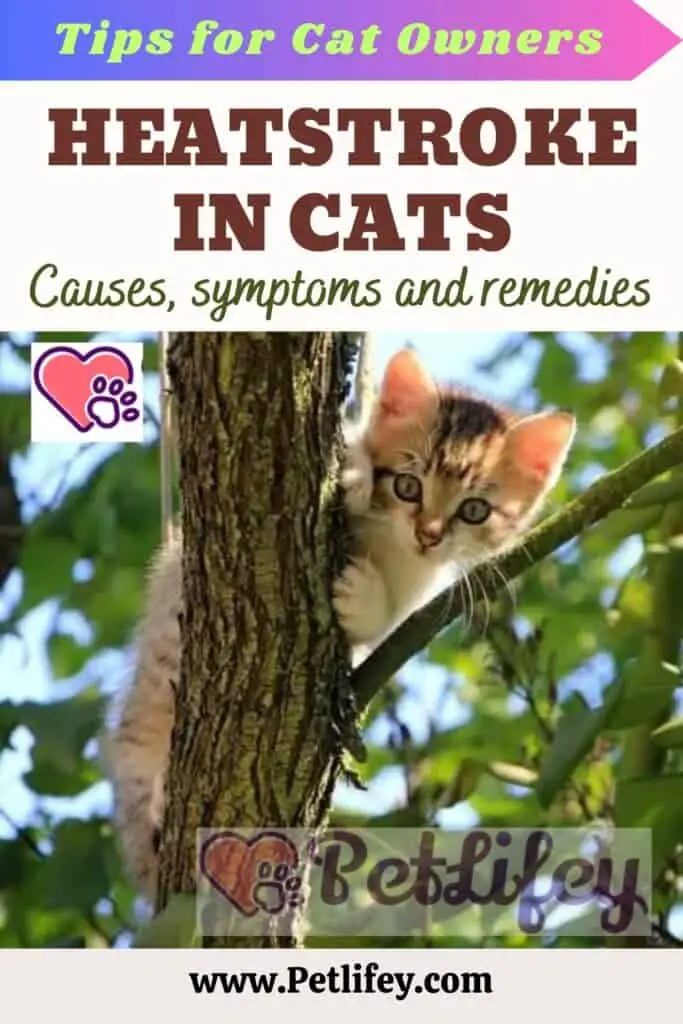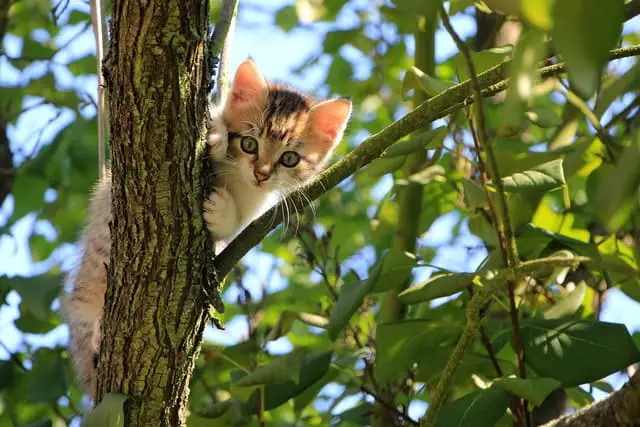
Is the heat coming and you fear for your cat’s health? Here’s what you need to know about heatstroke to fight and avoid it.
Cats love the sun – this is absolutely true. Also because cats come from very hot areas (think of ancient Egypt) and have an internal temperature much higher than that of humans. But despite its great resistance, prolonged exposure to sunlight or a claustrophobic condition in which our cat could find himself could jeopardize his health. Here are the symptoms to recognize to avoid heatstroke and try to prevent it before it’s too late.
Do cats suffer from heat?
A cat has an internal body temperature that fluctuates between 38˚ and 40˚: this means that when the temperature outside is high, the feline suffers the heat much less than us. It also has very developed mechanisms of ‘resistance’ to heat: for example the concentration of water in the urine, which allows the body not to dehydrate. But the fact that he has a habit of licking his fur often helps to keep his body temperature low and constant. Yet they are not robots! So prolonged exposure or an excessive heat situation could be fatal for them too.
Heat stroke: places and symptoms
One of the first signs of a cat suffering from heat is excessive sweating. The cat has a rather bizarre sweat expulsion mechanism: in fact, it sweats only in certain areas such as pads under the paws and the genital area. He also begins to breathe heavily and as if he were in apnea or had asthma: but how does all this happen? When the feline remains closed in ‘unlivable’ places due to lack of air and oxygenation.
The places-traps for cats
When we think of a place without ventilation, we rightly think of a car parked in the sun and a cat locked inside it without the possibility of getting out. The cockpit becomes an oven and the cat has very little chance of survival: this is why leaving a cat locked in the car is one of the crimes against animals, punishable by law. But not only in the car it can suffocate a cat: also in the attics where the absence of water, light and air ‘traps’ the cat in a sort of oven. So let’s not leave the cat in the car even for a few minutes and make sure that the cat has followed us everywhere, even in the attic, and hid silently in a corner, without us noticing.
Symptoms of a hot cat
A cat that is in a hyperthermic condition breathes heavily, as if unable to breathe. He usually has his mouth open and his tongue sticking out. You will probably find him lying on his side, completely devoid of strength. Another sign not to be underestimated is the drool in the mouth but also the strong tremors that go through the whole body. We could try to measure the temperature of the cat to be sure that it is really very high. Internally, his digestive system may have very strong ‘jolts’: for example, episodes of diarrhea, nausea and foamy vomit may occur. Finally, the heart beats faster than usual: just put a hand on his chest to verify that it is not a regular beat.
Heat stroke: causes
It is likely that knowing the causes of hyperthermia in cats, we will be more careful so that our cat is not in a similar situation. There are some types of cats more prone to hyperthermia, such as the obese cat or the elderly cat, but generally there are factors that determine a state of excessive heat: here they are.
Waterfall
Not only when we forget to fill the water bowl we put the cat’s health at risk, but also when we don’t make sure that it is clean and fresh. A cat does not get wet nor does it drink dirty or hot water. So it is not enough to check that there is water in the bowl, but it is also essential to change it so that it is always ‘palatable’ for our cat.
Environment
It is essential that the environment in which the cat lives is always ventilated and not too humid . Places such as attics, where the sun beats on the ceiling even if we don’t see it entering directly from some windows, become like ovens without openings. In general, it is good to avoid that the cat closes itself in closed and claustrophobic environments: when we do not find it, we immediately go to check in the most dangerous places!
Small spaces
Not only in cars, where it still has a better chance to move, but especially in small spaces such as pet carriers and cages, the cat can feel trapped. It is always advisable to prefer cages of excellent quality, to ensure that the environment is always ventilated: even a cage can reach very high temperatures even if there are small openings. So it’s best not to lock your cat inside for too long.
Too much sun
Cats love to be in the sun and maybe enjoy its rays from behind a window, but there is no need to let them stay too much in contact with the heat. On the beach or at home it is advisable to check that the cat does not overdo it with its ‘tan’ as the body temperature could rise in a short time.
Remedies for heat stroke

Once we have noticed the symptoms described above in our cat, what should we do before it is too late? If we have a veterinary facility nearby it is good to take him there immediately, but while waiting to reach the place and before the expert visits it, we can take some simple remedies to lower the body temperature of our suffering cat.
No ice
It could be the worst solution in these cases: the cold from the ice would tighten the blood vessels in the skin and prevent the heat inside the body from escaping. So covering him with ice cubes is the best way to kill him.
Shadow
It might seem obvious but in reality the first thing to do is to remove it from the sun and guarantee it a shelter in the cool and shade. You will see that the burning sensation should decrease and the cat will already have a first feeling of well-being.
Wet cloths
Once in the shade it is advisable to cover the cat with damp cloths: we always use old rags or torn sheets. There is no need to wrap him totally in a towel because the towel could have the effect of a ‘hood’ on his body and the cat could suffocate. It is best to use a series of wet bandages that cover his forehead, neck, armpits and groin. The water must be cool and not cold, as the violent impact with frost could cause even worse damage such as thermal shock.
Let’s make him drink
With the help of a spray we can hydrate the tongue and nose. Sometimes the cat is so stressed that it cannot even move, so it is advisable to help it with a constant and continuous spray of fresh water.
Alcohol
Some suggest that you bathe your cat completely with alcohol: not to get him high, but for the action this substance has on his body. In fact, alcohol has a vaso-dilator action and, once in contact with the body surface of the cat which has reached 40˚, it evaporates instantly. In fact, the vessels dilate and this allows the internal heat to escape.
Fan
It is okay to freshen the air but not with a jet of cold air directly on the cat’s body. It is not the case to point it directly at him, but to position it perpendicular to his body. Even the air conditioning that is too cold could have devastating effects on his body: better a distant fan and at a moderate speed.






